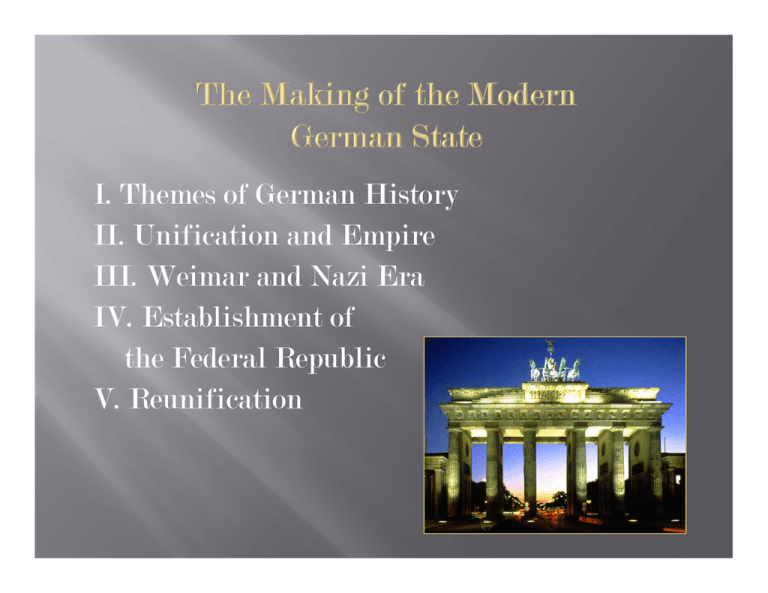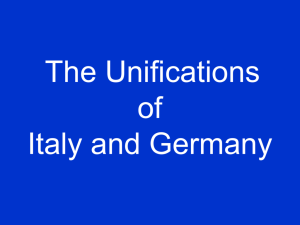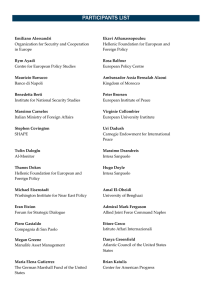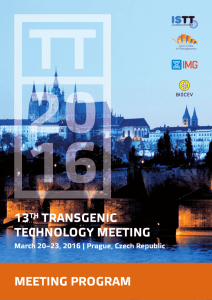I Th f G Hi I. Themes of German History
advertisement

I. off German History I Themes Th G Hi II. Unification and Empire III. Weimar and Nazi Era IV. Establishment of the Federal Republic V. Re Reunification cat o Type of Government Unification of Germany People in German State Role of Germany in Europe Grappling with the Past in the Present First two settled; last two still open 1815: 39 German states Bismarck and Wars of Unification Prussia Monarchy) P i (Hohenzollern (H h ll M h ) Austria (Habsburg Monarchy) Denmark (1864); Austria (1866); France (1870) German Empire G E i (S (Secondd Reich R i h -18711871 1918) Junkers and ‘Marriage g of Iron and Rye’ y ‘Authoritarian Democracy’ and Nationalism World War I and Collapse The Iron Chancellor A Republic “A R bli without ith t Republicans” Th “St The Stabb in i the th B Back k” Myth M th Reparations and H Hyperinflation i fl ti (1923) Ideological Division D Depression i andd th the Rise Ri of the Nazis (NSDAP) Germany 1923 Papering the wall with worthless Reichsmarks Establishment of Dictatorship Centralization of Authority Oppression of Jews Rejection of Versailles Aggression and War Kristallnacht (Nov ember 1938) Gates of Auschwitz (Arbeit Macht Frei – Work Makes You Free) Defeat Destruction Division into E t andd W East Westt Dresden 1945 Occupation O ti andd disagreement di t over German G reconstruction J l 1948: Military July Milit ggovernors “recommended d d” Premiers draft a constitution Elites: fear permanent division (hence ‘Basic Basic Law Law’)) Average German focused on survival; rejected politics German Democratic Republic p ((DDR)) in East Berlin Wall 1961 Flag of the DDR Collapse of the German Democratic Republic (East Germany) Gorbachev: Perestroika and Glasnost Outflow through the Satellite Countries Protest and Collapse (November 1989) Rapid Reunification The Problems of a Unified Germany East meets West as the wall comes down FRANCE Test Grades 7.00 6.00 5.00 4.00 3.00 2.00 1.00 0.00 A (50-45) B (44-40) C (39-35) AVG = 37 (74%) D (34-30) Median = 37 (74%) F (< 29)


